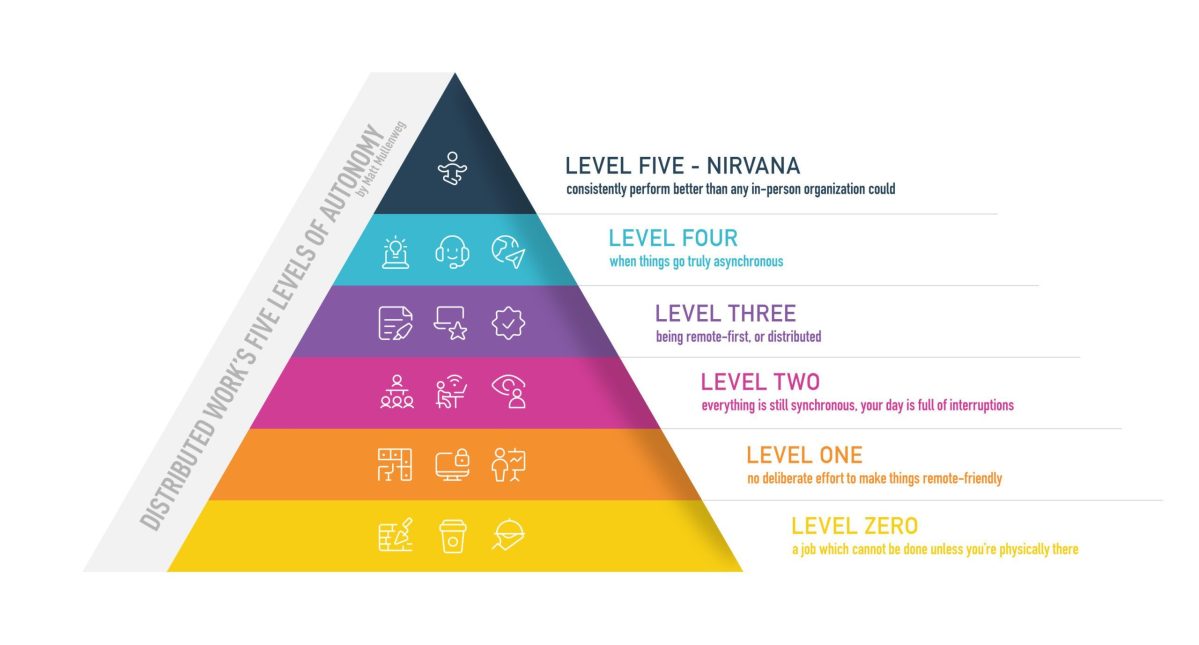
Back in April, when entire sectors of the economy had just recently — and abruptly — transitioned to remote work due to the COVID-19 pandemic, Matt Mullenweg shared an aspirational roadmap, describing the five levels of autonomy companies go through along their journey from fully colocated to truly distributed. With increasing signs that we might never go back to the old normal, Enrique Dans, at Forbes, reflects on what executives and employees alike have learned in the intervening months. He takes Matt’s five levels as a starting point to ask how our collective understanding of remote work has changed as well, and what the near future might hold.
Where are we headed? Toward levels 4 and 5, characterized by the optimization of working practices, which means changing the synchronous-asynchronous balance: fewer rounds of endless video conferences and more short videos recorded for later viewing, much more Slackand similar communication tools, along with less time spent sitting in front of a screen listening to other people. Shared documents people can work on synchronously?—?coordinating in the chat window?—?or asynchronously are infinitely more effective than a marathon video conference. A spreadsheet, text document, or presentation that requires input from several people is an ideal solution for Google Docs, Office 360, or any of their competitors.
Head to Forbes to read the rest of Enrique Dans’ article.

